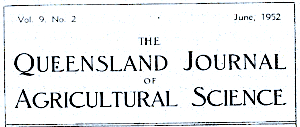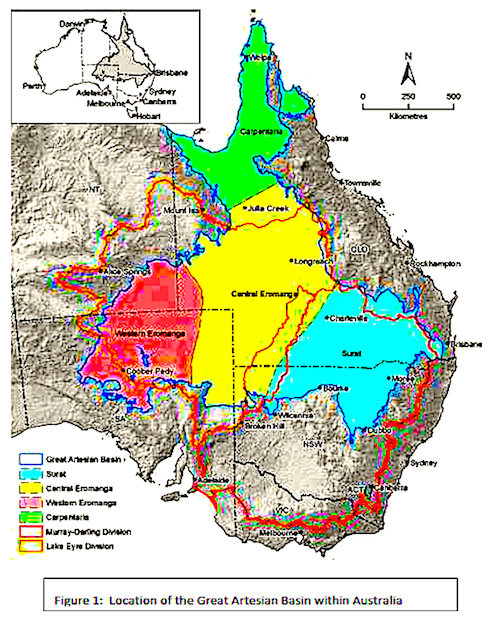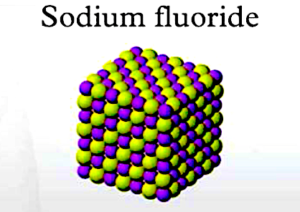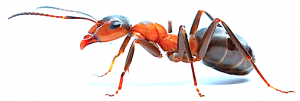 .
.
This information is relative to humans
and their pets. It is an explanation
as to why Queensland under
rural governments would
NOT entertain the idea
of adding fluorides to
domestic water supplies.
CHRONIC ENDEMIC FLUOROSIS
OF
MERINO SHEEP IN QUEENSLAND
by
J. M. Harvey
The three small books A, B, & C may
be slow to load. They contain x-rays,
photos, charts and maps.
. . . . . . .
PLEASE CLICK BELOW FOR BOOKS
(A), (B), & (C)
( A )
QJAS Vol 9 No 2 June 1952 @ 300dpi
See pages – 47 – 141
( B )
QJAS Vol 10 No2 June 1953 @ 300dpi
See pages – 109 – 125
( C )
QJAS Vol 10 No3 Sept 1953 @ 300dpi
See pages – 127 – 160
We apologise that there is other information
on these books. We also suggest you read
the document ‘EXEGESIS’ below, or
better still have a hard copy on
hand while reading these
three small books.
www.unitywater.com/about-us/our-business/water-quality/whats-in-your-water.
Some Background Reading & Comments
Credit – CSIRO PUBLISHING
The 1945 –1955 Queensland Artesian
Fluoride Experience
A Unique Phenomenon Within
The Australian Wool Industry
by
Harry F. Akers & Suzette A. T. Porter
School of Dentistry,
University of Queensland,
Brisbane, Australia.
Extract from thirteen pages.
Explanation:
In the 1940s and 1950s, Queensland’s agricultural bureaucracy instigated and supervised an investigation that was without precedent in Australia in its rationale, geographical diversity, and commitment of resources.
Artesian fluoride had the potential to affect work practices, land values, animal husbandry, and wool economics adversely.
As a result, the United Graziers’ Association, the Queensland Cabinet, the state’s agricultural bureaucracy, veterinarians, and pastoralists all viewed exposure of herds to fluoride as a serious and urgent issue.
The Department of Agriculture and Stock [now Queensland Primary Industries] rapidly determined that there was no cure, but were able to manage the problem by scientific investigation, methodical field study, and the application of research findings to animal husbandry.
.



Newspaper Clipping ⇒ HERE
.
—— EXEGESIS ——
The three documents above A, B, and C,
reveal the nature of fluoride and some
of its impacts on living tissue,
both animal and human.
.
This research has been out of print for many years and was funded by The Queensland Government.
It was undertaken without interference from multinational companies, dentists and before artificial water fluoridation
was under consideration.
As can been seen on the charts, pages 11–16, in the first report, like India, China, Pakistan and much of the middle east, most of the artesian water in Queensland is not suitable for domestic use as it is high in fluoride. Although some of this water is very high in F., sheep do not live as long as us humans, who will received a lesser dose under artificial water fluoridation*** but accumulating for 50 + years, and sheep, unlike humans manufacture Vitamin ‘C’ which gives them some protection from fluorides.
Calcium fluoride occurs naturally in some waters, especially in underground waters, [also found on the planet Mars – See HERE ] It is not used for artificially fluoridation – it is not a industrial waste looking for a market! It occurs naturally, but is a health hazard, as can been seen in the above info on sheep drinking bore water.
.
Sodium fluoride (NaF) is an inorganic compound. It is used in the artificial water fluoridation of domestic water, also in metallurgy, and as a flux, and is also used in pesticides and rat poison. –
– Typical analysis: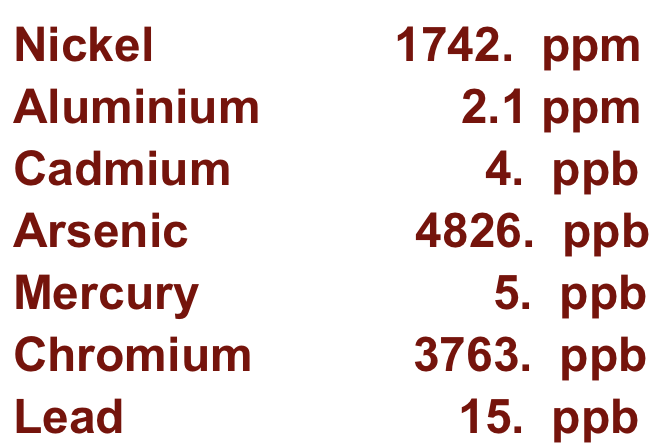
More on nine other fluorides  HERE
HERE
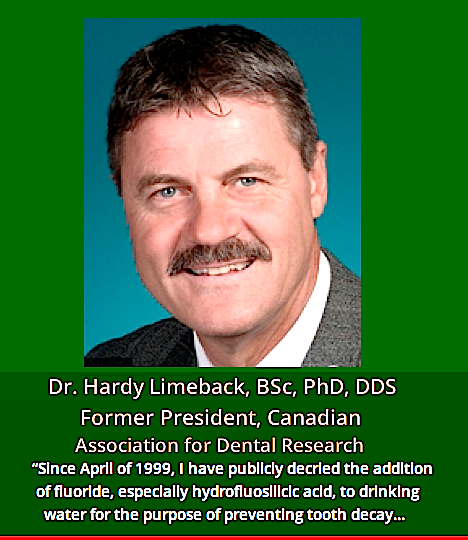 The lethal dose of
The lethal dose of
NaF (an artificial fluoride) is
50 times smaller than that of CaF2
the naturally-occurring fluoride
~ Dr. Hardy Limeback,
Biochemist & Professor of Dentistry,
University of Toronto,
Former consultant to the
Canadian Dental Association.
 .
.
Sheep Health & Disease Prevention
Managing Sheep Diseases & Disorders
Extracts to humans are presented below:
THE QUEENSLAND JOURNAL OF AGRICULTURAL SCIENCE
Vol. 9. – – No. 2 JUNE, 1952
~ CHRONIC ENDEMIC FLUOROSIS OF MERINO
SHEEP IN QUEENSLAND ~
By
J. M. HARVEY, M.Sc.,
Senior Chemist, Biochemical Section, Chemical Laboratory,
Division of Plant Industry.
The page numbers below are as per PDF listings
Page 11-16
Fluoride levels in Bores Throughout Queensland:
Page 21
…The possibility of fluorine excretion in
milk of cows depastured in endemic
areas of Queensland and confined
to artesian water containing 7 p.p.m.
F. was examined. The level of fluorine
in the milk did not exceed 0.25 p.p.m…
Page 24
1) Ewes on water containing up to 10 p.p.m. F. and irrespective of the quality of pasture or ration, do not excrete an increased amount of fluorine in the milk…
Our Comment:
Breast milk in humans is also low in F. even if mother is on a high F. diet.
Nature protects its young from F. especially at the beginning of life when the blood brain barrier is not yet well formed. ~
Page 29
It has been reported that an insufficient supply or an imbalance of other inorganic constituents of the feed has been observed to influence the toxicity of ingested fluorine, while the addition of extra calcium phosphate to the ration has been reported to reduce the toxicity of calcium fluoride for sheep (Velu, 1933). Peirce (1939 stated that the toxic effect of fluorine is seemingly enhanced in poorly nourished sheep…
Our Comment:
This is why people on poor diets are also at greater risk when drinking fluoridated water, and/or living in F. air pollution environments…
Page 47
1) There is some accumulation of fluorine in the kidney and thyroid.
Our Comment:
The same as humans, F. is antagonistic to iodine. (India and China)
Page 50
1) All groups show a considerable fluorine concentration in bones and teeth as compared with that found in the normal control sheep.
Our Comment:
The same as humans
Page 77
These experimental findings support field experience, which suggests that the teeth lesions plus the accompanying pain prevent the sheep from collecting and mastication the feed. Thus the nutritional level is reduced and in its turn the yield of wool. Further field evidence lies in the fact that actual wool defects were not recorded in sheep in Queensland prior to 1941, when White, Moule, and Seddon looked for and found the dental lesions of fluorosis…
Upper and Lower Jaws of a Normal Animal
Abrasion of Molars and Premolars of Sheep Using Water Containing 5-7 p.p.m.
Fluorine and Depastured on Hard Mitchell Grass Country.
Note the compensating wear on the upper and lower molars and premolars.
Page 81 Fig. 86.
Three Examples of the Effect of Fluorine Intake Through
The Drinking Water on the Incisor Teeth of Sheep in Endemic Areas.
Left, Teeth from and animal following irregular intake of
unsuitable water during its first year of life.
Centre, Teeth from a 6-tooth sheep on unsuitable water from an early age.
Right, Teeth from a sheep subjected to intermittent intake from unsuitable water during its growing period.
Page 84
6) Teeth – Apart from the usual lesions associated with fluorosis, there are indications the fluorine in the drinking water delays the eruption of the incisors and produces badly deformed mouths. The elongation of the incisors and some abnormalities may be partly due to the type of feeding and mineral imbalance. There were, however, cases of delayed eruption and deformed mouths in groups 6 and 7, where the animals were on a balanced diet.
Our Comment:
The same as humans-
In their paper entitled “The Failure of Fluoridation in the United Kingdom”, when discussing the final report of that U.K. Health Department study, Professor A. Schatz and Dr J.J. Martin stated in 1972:
“It is thus clear that fluoridation does not prevent or reduce tooth decay. Instead, it merely postpones the appearance of caries by about 1.2 years.
Fluoridated children develop the same amount of tooth decay as their non-fluoridated counterparts. The only difference is that caries starts developing approximately 1.2 years later in the fluoridated group.”
This delay, at least partly, could be due to the teeth of children in fluoridated areas erupting (breaking through the gums) at a slightly older age, and therefore being exposed to decay-producing factors for a shorter period… (as in Sheep)
Page 85
7) Bones – The findings shown in the X-rays are not in keeping with those reported by other workers. All experimental groups showed rarification rather than thickening of the bones. This is particularly noticeable in the mandible, where the irregularities on the ventral border, formerly thought to be exostoses, have been shown to be due to a reduction in thickness of compact substance and the roots of the molars (and in some cases the premolars…
Page 89
4) Pregnant ewes drinking water containing up to 10 p.p.m. F. do not transmit appreciable quantities of fluorine either to the foetus or to the lamb through the milk after birth. However, although this procedure is safe with regard to the lamb, field evidence does suggest lower lambing figures in such ewes. In addition, water containing 10 p.p.m. is certainly harmful to young breeding ewes.
Our Comment:
Breast milk in humans is also low in F. even if the mother is on a high F. diet. Nature protects its young from F. especially at the beginning of life when the blood brain barrier is not yet well formed.
Recent research suggests that the male of the species
may not be so productive in F. environments.~
Many people named and not named in the above research papers
deserve due acknowledgement, and so do the sheep
who gave their lives to this research.
Chairperson – Brisbane Anti-Fluoridation Association
~~~~~~~~~~~~~~~~~~~~~~~~
Vitamin C or L-ascorbate is an essential nutrient for a large number of higher primate species, a small number of other mammalian species (notably guinea pigs and bats), a few species of birds, and some fish and humans.
NOTE: 
TESTING FLUORIDE AND OTHER DRUGS USING
RATS OR MICE WILL YIELD ERRONEOUS
RESULTS AS THESE ANIMALS WILL
MANUFACTURE MORE VITAMIN ‘C’
TO DETOXIFY THE FLUORIDE
Laboratory guinea pigs cost more
to maintain because they need
fresh food containing vitamin C…
. . . . . . . . . . . . . . . . . . . .
 See our post on the NEW Lab. animals
See our post on the NEW Lab. animals 
Fluoride and Zebrafish – (Danio rerio)
They are a cheap & efficient alternative
to rodents & guinea pigs.
. . . . . . . . . . . .
Extract from:
9.3 Livestock drinking water guidelines
Version — October 2000 page 9.3–1
9.3.1 Introduction
Livestock production in Australia and New Zealand relies on both surface water and groundwater supplies. Water quality in streams and dams (surface waters) is influenced by catchment geology, topography, soil type and climate. Groundwater, which is used as a source of drinking water for livestock over a large area of Australia (and in parts of New Zealand), may contain large quantities of dissolved salts, depending on the soil and parent rock of the surrounding area and many other factors including rainfall, evaporation, vegetation and topography. The quality of both groundwaters and surface waters may be affected by catchment land use practices, including agriculture, mining and other industries, with the potential for increased concentrations of salt, nutrients and other contaminants, such as pesticide residues and heavy metals.
Daily water intake varies widely among different forms of livestock and is also influenced by factors such as climate and the type of feed being consumed. Average and peak daily water requirements for a range of livestock are given in table 9.3.1.
9.3.5.9 Fluoride
Fluoride concentrations greater than 2 mg/L in drinking water for livestock may be hazardous to animal health. If livestock feed contains fluoride, the trigger value should be reduced to 1.0 mg/L.
Source
Unpolluted surface waters generally contain low concentrations of fluoride but concentrations in groundwater may be higher in some areas. For example, groundwater at Carnarvon, Western Australia, contains fluoride at concentrations up to 5 mg/L (Hart 1974).
Groundwater fluoride concentrations >2 mg/L have been reported at several locations in Queensland, mainly in the Great Artesian Basin, with a few cases showing concentrations >10 mg/L fluoride (Gill 1986).
Animal health
Fluoride accumulates in bones rather than in soft tissue and excess uptake of fluoride can result in tooth damage to growing animals and bone lesions in older animals (Rose & Marier
1978, CPHA 1979). In Queensland, fluoride in drinking water for livestock at concentrations greater than 2 mg/L has been observed to affect the teeth of young animals (VIRASC 1980).
The diet may be another source of excessive ingestion of fluoride if the vegetation is contaminated by aerial deposition in industrial areas (NAS 1971), but no toxic effects were reported from dietary concentrations of 30–50 mg/kg for cattle, 70–100 mg/kg for sheep and pigs and 150–400 mg/kg for poultry. Van Hensburn and de Vos (1966) showed that levels of fluoride >5 mg/L in drinking water adversely affected breeding efficiency in cattle.
Moreover, Hibbs and Thilsted (1983) reported erosion of teeth at concentrations of 3.3 mg/L. Experiments with laying hens showed a significant reduction in egg production for hens receiving 6 and 20 mg/L sodium fluoride (2.7 and 9 mg/L fluoride) in their drinking water but that successful production could continue with concentrations up to 14 mg/L sodium fluoride (6.3 mg/L fluoride) (Coetzee et al. 1997).
The risk of fluorosis in either sheep or cattle may be avoided if sufficient water of low fluoride concentration (e.g. surface water) is available and paddocks arranged so that young stock have access only to fluoride-free water for the first three years of life. Where only limited quantities of low-fluoride water are available, the damage from fluorosis will be minimal if young stock are exposed to fluoride-enriched water for no more than three months at a time and then kept for at least three months on low-fluoride water. Control measures are less important in good seasons when stock receive the bulk of their fluid requirements from pasture.
Version — October 2000 page 9.3–21
The fluoride concentration in water is rapidly increased by evaporation. This is particularly evident in flowing bores where the water is reticulated through shallow bore drains. As a temporary measure while paddocks are being arranged so that young stock may be kept on low-fluoride water, it is important that the young stock should be watered as near to the bore head as possible.
Derivation of trigger value
The ANZECC (1992) guideline for fluoride has been retained in the absence of any new contradictory information. The trigger value of 2 mg/L is consistent with guidelines developed for fluoride in Canada (CCREM 1987) and South Africa, although the South African guidelines suggest that adverse effects are unlikely to occur in ruminants at concentrations less than 4 mg F/L (DWAF 1996b). 9.3.5.10 Iron…
More Research Info On F. And Sheep:
Proc. Aust. Soc. Anim. Prod. Vol. 16
THE BONE FLUORIDE OF EWES & LAMBS IN N.S.W.
SALLY M. WHEELER* & ARNOLD D. TURNER*
http://www.livestocklibrary.com.au/bitstream/handle/1234/7816/Wheeler86.PDF?sequence=1
See also
The Fluoridation of Public Water Supplies Act (1963)
Why Not? – Timing, Circumstance,
A Review Of A Review
by Dr Harry Akers ⇓
ADAQ News – Nov. 2006
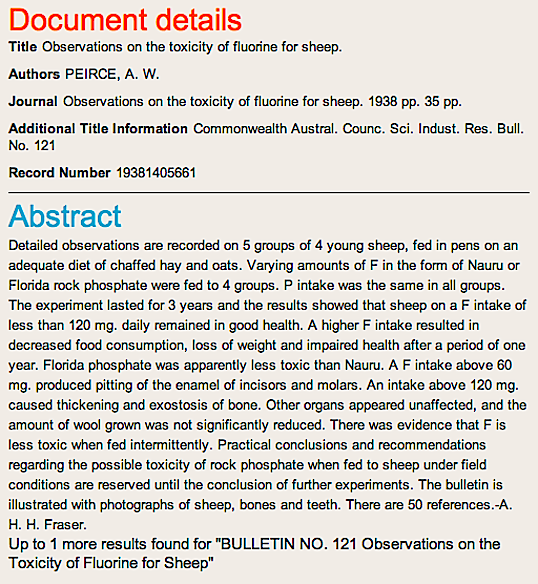 by A.W. Peirce. M.Sc.
by A.W. Peirce. M.Sc.
-
Melbourne. 1938
Studies on fluorosis of sheep. II. The toxicity of water-borne fluoride for mature grazing sheep.

